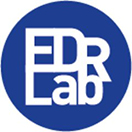Readium LCP

Overview of the DRM ecoystem
EDRLab is working actively with European publishers, ebook distributors, public libraries and application developers for the success of an open publishing ecosystem based on EPUB 3.
One of the use cases we have to deal with in the publishing world is public library lending. “Lending” means that after some time, a library patron “returns” his book. In a digital world, it means that he can’t read the book anymore, this is called chrono-degradability. This requires the use of an interoperable and lightweight rights management solution, and we are now releasing such a solution, called Readium LCP.
However, Readium LCP usage is not limited to library lending; it is usable in many situations, including rental, retail and subscription.
One of the main advantages of Readium LCP is that its users avoid any vendor lock-in. But what is vendor lock-in?
Vendor lock-in
Vendor lock-in is the total control by one vendor of all aspects in a value chain.
Let’s take an example, a huge global company which controls:
- Catalog: publishers need to be on the vendor platform because it represents a large part of their digital revenue.
- Format: the vendor has created a proprietary format. Vendor’s devices don’t read EPUB ebooks.
- Copyright protection: the vendor has developed a proprietary DRM. Vendor’s devices don’t handle other DRMs.
- Distribution: the vendor has an efficient e-commerce website, with an opaque recommendation engine.
- Devices: the vendor sells proprietary devices, which accept only the proprietary formatted ebooks sold on the vendor’s e-commerce website.
This is a perfect vertical business, with lots of happy customers buying and reading ebooks exclusively marketed by this vendor.
But they are many potential risks there, for instance:
- Lack of diversity: the vendor may refuse to sell a given ebook, for any reason … or, because of a business fight with a publisher, the publisher may refuse to sell ebooks to the vendor.
- Lack of features: the vendor may decide that a given feature – for instance, text to speech – is not needed on its devices. Without TTS, people with print disabilities won’t be able to use the vendor’s solution, they must have an alternative.
- Lack of innovation: the vendor may decide not to support a new type of authoring (e.g. some new way to provide mobile optimized comics with clever page transitions).
For all these reasons, letting one vendor getting a monopolistic position in the publishing industry is dangerous.
Interoperability
We prefer promoting interoperable alternatives, where any catalog can be exposed in any format, protected with any copyright protection, sold on any distribution platform, and read by any device.
As a result, we are expecting:
- a diversity of contents and end user features,
- collaboration / coopetition between the entrepreneurs in the value chain,
- unleashed innovation.
DRM solutions
On the ebook market, copyright protection is currently implemented using two different technologies:
- Watermarking, a.k.a. « social DRM », i.e. addition of hidden information in text, picture, audio and video resources.
- DRM (Digital Rights Management) solutions, i.e. encryption of the content.
The respective efficiency of watermarking vs DRM is still to be scientifically evaluated, and we won’t discuss this matter here. As a summary: many watermaking solutions exist, some open-source some commercial; watermarking is transparent for the EPUB format and Readium software; therefore EDRLab cannot offer much in this area.
But some business models, like library lending, cannot rely on watermarking: if after the loan end date, the book is still accessible, this is not a loan, this is a gift.
DRM solutions are like the ancient god Janus: they have two faces. For many publishers it is a must for copyright protection. But for many end users, it is a plea because it puts too many constraints on what the user can do with his ebook. For instance,
- A well known DRM solution forces the user to create a DRM vendor account before he can access an ebook he lends in a public library.
- He can’t read the book on more than 6 devices, for his entire life. He has to contact a support he doesn’t know about and prove his case if he wants to extend this device limit.
- He can’t lend the ebook to a friend, or he has to give his DRM vendor user authentication info to this friend.
- If he’s blind, he cannot listen to the ebook on a specialized TTS enabled device, because the content is displayed as images, not text.
- They are good chances that he won’t be able to get a new license for reading his ebook on a new device after some years, because the bookseller may close, or he won’t remember where he has bought his book.
- He can’t expect keeping the ebook for decades, because the proprietary DRM will, one day, be obsolete and he won’t find any new device accepting it.
The net result is that some smart buyers “unlock” their ebooks as soon as they have bought them. Which is forbidden by law in EU member states, the USA, and several other countries.
DRM vs Hackers
Millions and millions of euros have been spent in developing DRM solutions for ebooks.
DRM technologies for published content have been on the market for at least 20 years.
And each time hackers developed new cracking solutions.
In the ebook domain, you can easily crack the Adobe, Kindle or Barnes & Noble DRMs with a one click solution, as a simple Google search suggests.
Should we go-on creating always more complex solutions, either non interoperable because developed for e-commerce vertical silos, or difficult to use for readers?
A group of Readium members, the Readium DRM Steering Committee, has chosen an alternative way.
Back to simplicity!
Readium LCP relies on well known protection techniques (AES 256 encryption, SHA 256 hash, X.509 certificates, code obfuscation …) and does not try to invent something smarter than necessary. It is therefore an efficient but lightweight implementation of a DRM solution.
See also: Readium LCP principles.
A bit of history
The seminal paper on Readium LCP was written in 2012 by Bill Rosenblatt – a recognized expert on technology issues pertaining to intellectual property in the digital age. This document is still available on the IDPF website as “EPUB Lightweight Content Protection: Use Cases and Requirements”.
The project was then moved from the IDPF to the Readium Foundation, and a draft of specification was authored by collaborators from De Marque, Feedbooks and Learning Ally. A complementary specification named « License Status Document » was then specified with the help of the New York Public Library (NYPL); this specification adds dynamic features to Readium LCP, specifically useful for a public library lending use case.
In December 2015, the newly created European Digital Reading Lab (EDRLab) decided to lead the implementation of Readium LCP as as a sub-module of Readium SDK. Several Readium members – namely Mantano, TEA, DRM Inside, ePagine – joined the project, providing expertise, source code and test scripts.
Multiple DRMS in Readium
Despite the fact that Readium will propose a new DRM technology to the EPUB ecosystem, the Readium SDK will support multiple DRM technologies.
Any DRM provider willing to get support from the Readium SDK can develop such a plug-in and provide it to his customers, and any Reading System based on the Readium SDK may embed such plug-in, so that diverse EPUB publications protected by different DRMs can be opened seamlessly.
Other Readium projects
Readium-2
The major evolution of the Readium SDK codebase, the objectives being better performances and stability, clarity of source code and documentation.
Readium SDK & JS
The reference EPUB 3 open-source reading engine for Web, desktop and mobile apps, on active maintenance by the Readium community.






 contact@edrlab.org
contact@edrlab.org +33 1 83 64 41 34
+33 1 83 64 41 34
